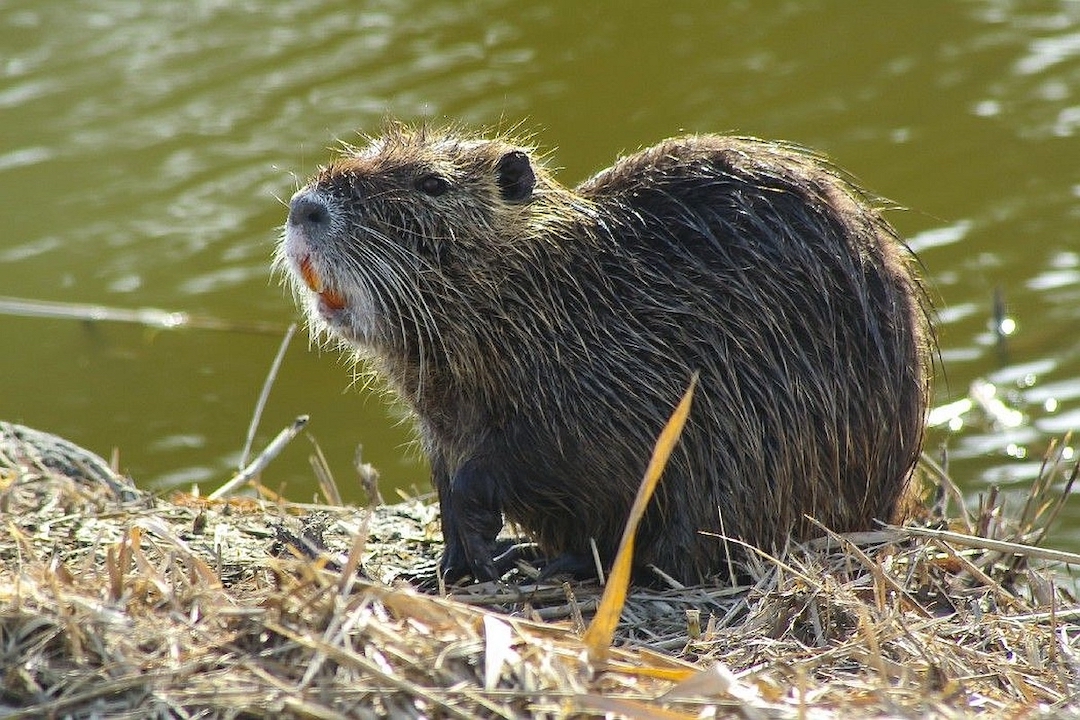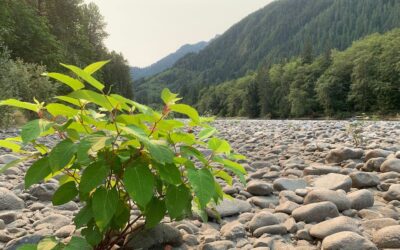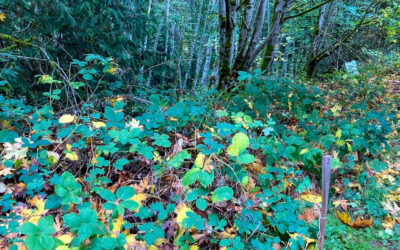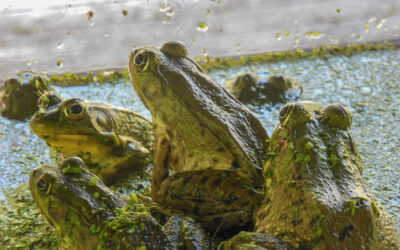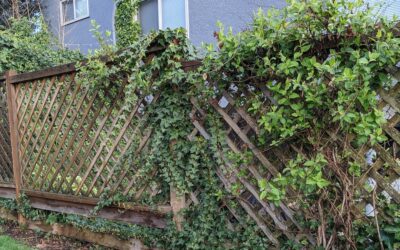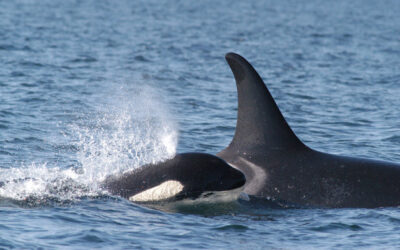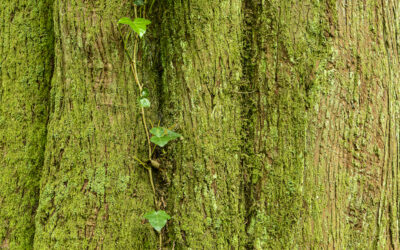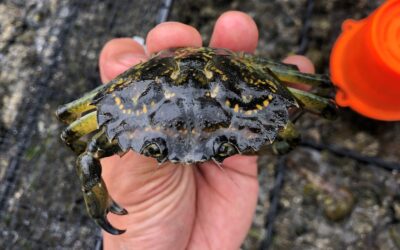DOUBLE JEOPARDY
The Intersection of Climate Change and Invasive Species
By Paul Heimowitz, Summer 2022
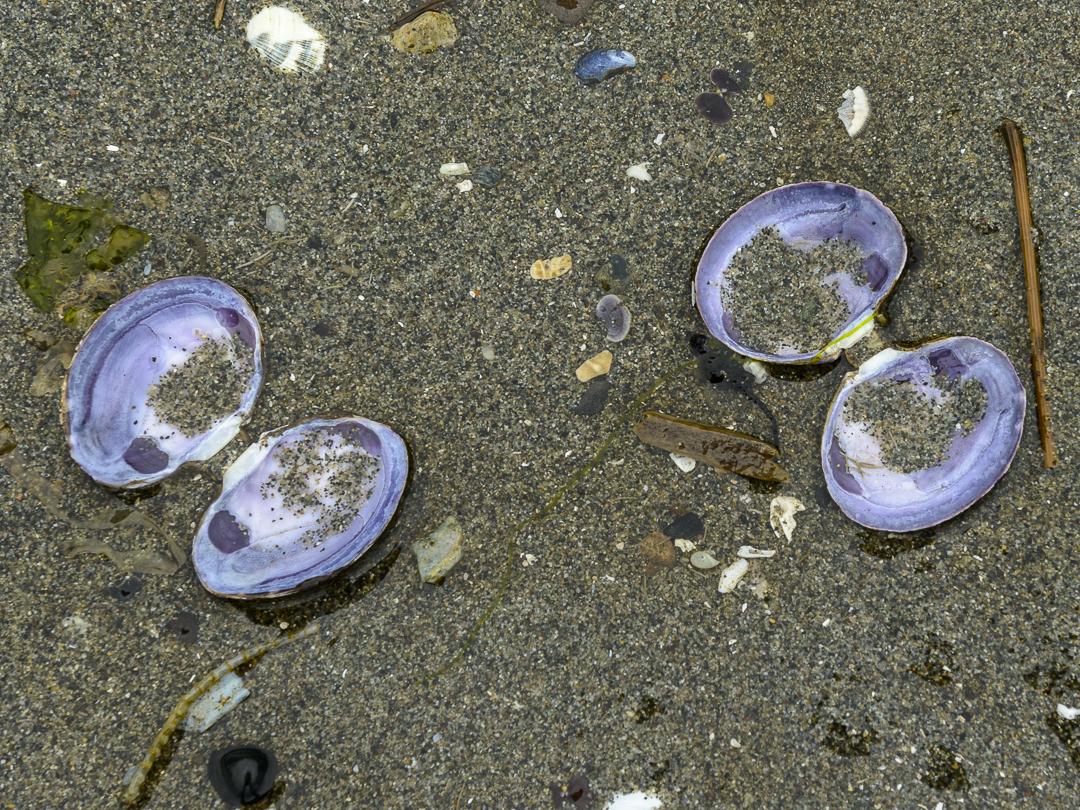
Purple varnish clam. photo by John F. Williams
DOUBLE JEOPARDY
The Intersection of Climate Change and Invasive Species
By Paul Heimowitz, Summer 2022
The arrival of non-indigenous people to the Salish Sea over the past few centuries has rapidly accelerated biological invasions of the region’s ecosystems. Smooth cordgrass, purple varnish clams, and Atlantic salmon are just a few examples of invasive species with ecological consequences for the Salish Sea (including altered sediment dynamics, water quality degradation, and disease transmission). We now can add the growing incursion of European green crabs to this list (see the related article). These species already cause environmental and economic problems, and also can affect indigenous cultural practices like the harvest of traditional foods. Enter climate change, and things get even more challenging.
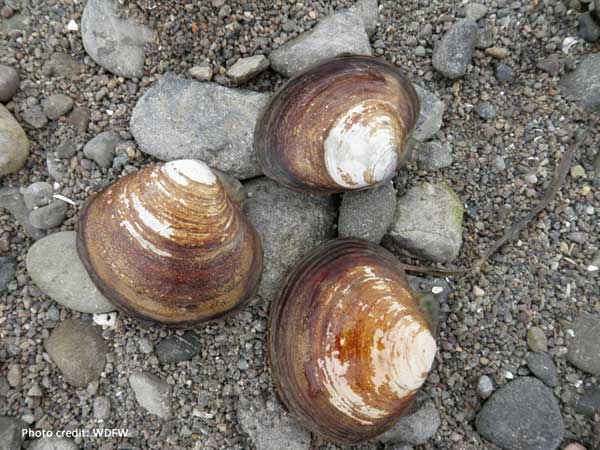
Purple varnish clam. photo by Washington Department of Fish and Wildlife
 See more about green crabs in this issue’s article Invasive European Green Crab in the Salish Sea.
See more about green crabs in this issue’s article Invasive European Green Crab in the Salish Sea.
How exactly are climate change impacts such as sea level rise, warming temperatures, and marine acidification influencing the nature of biological invasions in this part of our world right now, and how might they continue to shape biological invasions? We don’t have many answers yet, but we can’t assume it’s for the better. A 2020 report by Gervais et al., funded by the U.S. Geological Survey, shows how we have more questions than answers about climate change effects on non-native invasive species in the Northwest. The authors evaluated research papers addressing almost 400 terrestrial and aquatic species and found that only a small portion measured real-time relationships; most were predictive.
According to a 2008 scientific paper by Dr. Jessica Hellmann and her co-authors, there are five key connections between invasive species and climate change. Let’s look a little closer at each of them, and examples of how they already might be playing out in the Salish Sea:
- New pathways of introduction: Climate change is altering how we move ourselves and our things around the world. For example, reduction of sea ice is opening new shipping routes. Non-native plankton and other species already hitchhike into the Salish Sea in the ballast water and on the hulls of commercial and military ships (as well as via recreational boats). Existing vessel management programs are trying to address what we know about past and current threats, but will they successfully prevent arrival of stowaways that emerge from other parts of the globe?
- Susceptibility to new invaders: Even when they have a viable pathway into the Salish Sea, many organisms fail to secure a beachhead because conditions are inhospitable. The 2014 report “An assessment of marine biofouling introductions to the Puget Sound region of Washington State” by Davidson et al. notes at least 34 introductions of non-native species that did not become established. As temperatures warm, or precipitation changes cause a shift in salinities, previously thwarted invasions may finally stick. These opened doors can be directly related to tolerances of the invader or can result when climate change weakens the ecological resilience of native species and their habitats.
- Range shifts of existing invasions: Perhaps the most intuitive result of changing climate is that existing invasive species will spread into new areas. In some cases, ranges will grow; others may shrink. For example, cold temperatures are a key limiting factor for nutria, the large invasive rodent that already causes damage to wetlands and other freshwater habitats in central and south Puget Sound watersheds. Their distribution in the Northwest is predicted to extend northward as climate change brings milder winters. Similar expansions could take place for other existing invaders in the Salish Sea geography.
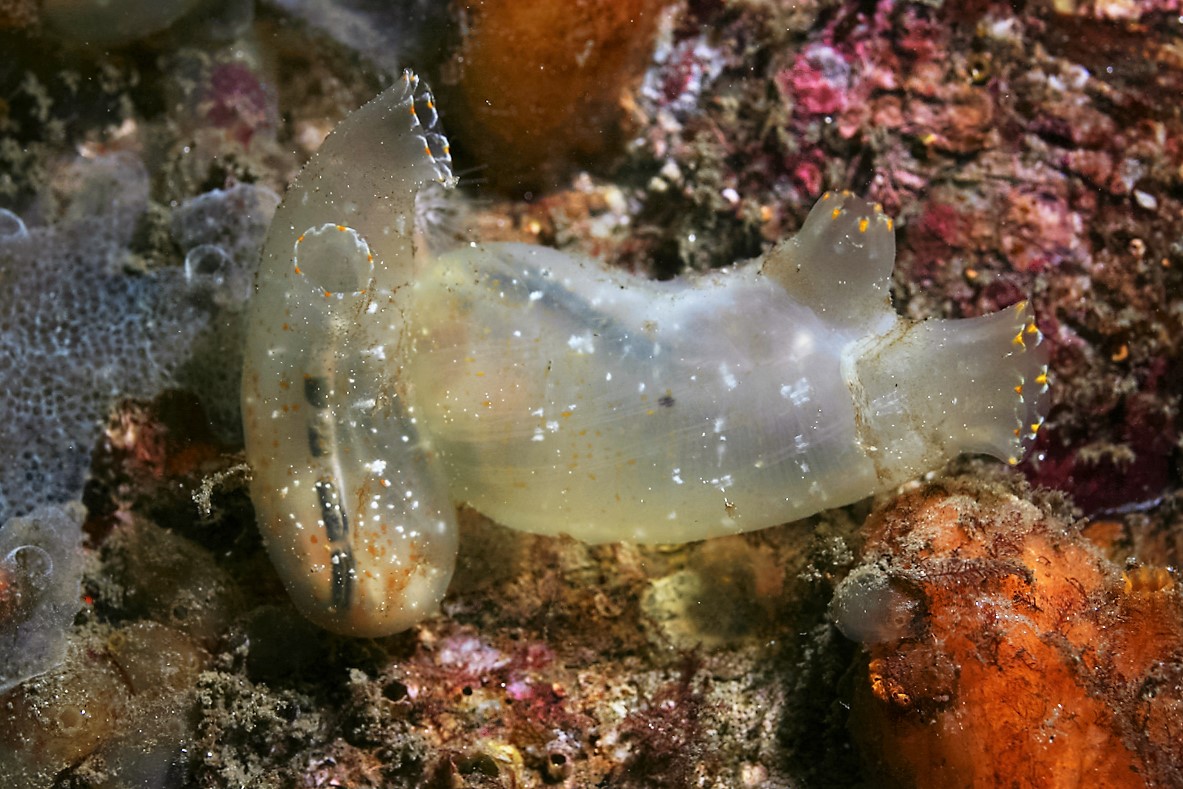
Ciona savignyi sea squirt. photo by Steve Lonhart/NOAA
- Altered impacts of existing invaders: Climate change may influence the impacts of invasive species by changing both the magnitude of the problems they cause and the vulnerability of those they harm. We lack good information about the actual impacts of many non-native estuarine and marine plants and animals in the Salish Sea: a large portion are not classified as invasive because we do not have data that may or may not substantiate negative impacts. The 2014 biofouling report cited above found that no published impact data existed for roughly 75% of the 74 non-native species established in Puget Sound; examples included the red algae Lomentaria hakodatensis, the sea squirt Ciona savignyi, the soft-shell clam Mya arenaria, and the starlet sea anemone Nematostella vectensis. Will rising sea level or altered water temperatures turn one or more of these species from Dr. Jekyll into Mr. Hyde?
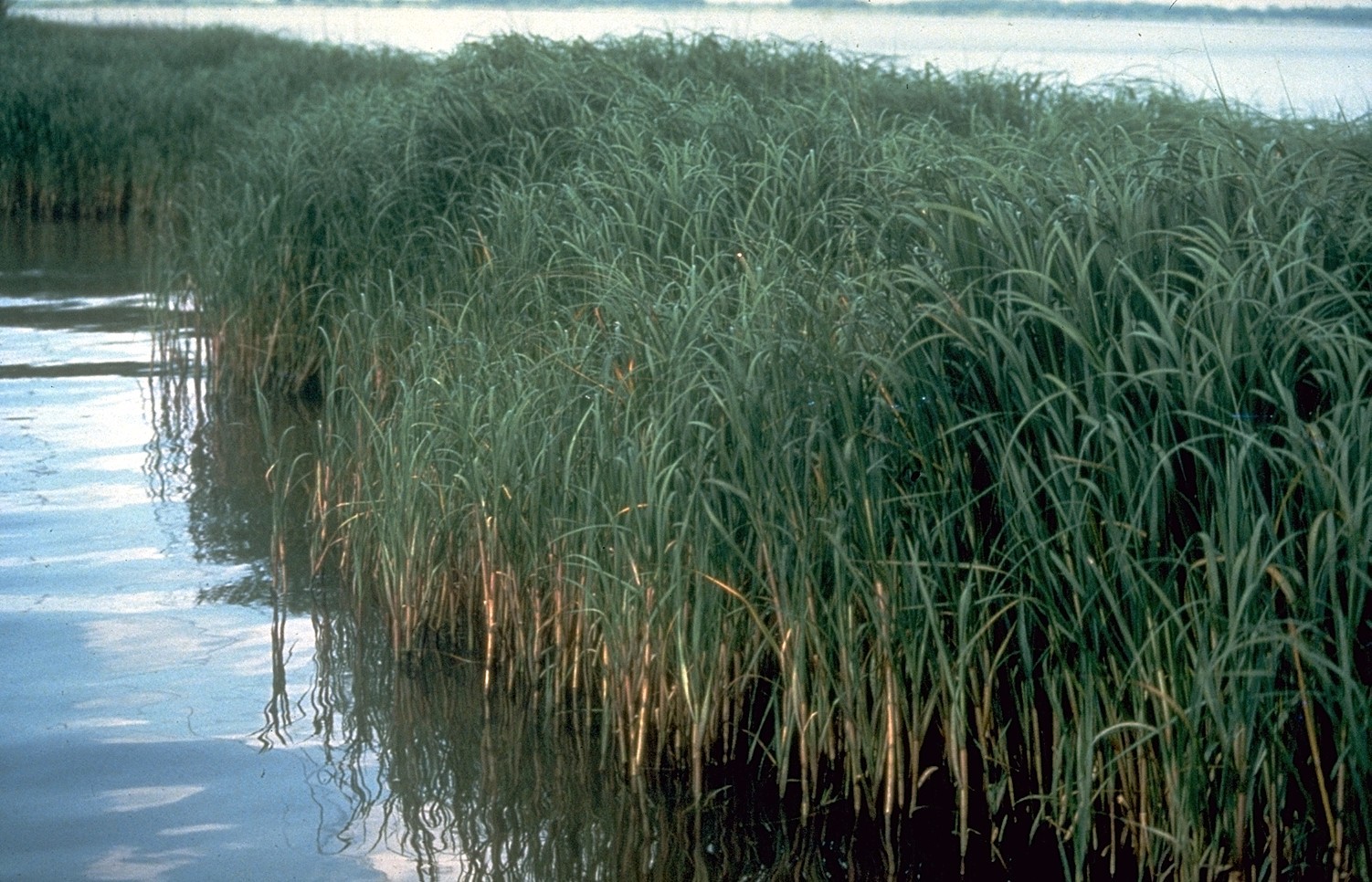
Smooth cordgrass (Spartina alterniflora). photo from Washington State Noxious Weed Control Board
- Changes to effectiveness of control methods: New environmental conditions brought about by climate change can influence how well our existing control methods work. For example, strategic use of herbicides has greatly reduced the extent of invasive cordgrass Spartina in the Salish Sea and other Washington estuaries. Aquatic chemical treatments work within a window of temperatures and water chemistry. As those windows change, herbicide effectiveness can improve…or decrease, and also give rise to previously unseen side effects on native species.
So, what do we do? Like all problems, an important first step is to acknowledge and talk about it. Recently formed to tackle this thorny combo, the Northwest Regional Invasive Species and Climate Change (NW RISCC) network works to heighten awareness, conversation, and partnerships by providing information and collaboration opportunities to invasive species scientists and managers, climate adaptation practitioners, and others through needs assessments, online presentations, and other resources. The NW RISCC website features a recording of the network’s inaugural symposium in 2021, results from a regional needs assessment, links to publications, and much more.
 See more about an invasive species relatively new to the Salish Sea, the European green crab, in this issue.
See more about an invasive species relatively new to the Salish Sea, the European green crab, in this issue.
 See more about another invasive species, the green frog, in this issue.
See more about another invasive species, the green frog, in this issue.
Rather than getting us down, the double whammy of invasive species and climate change can inspire all of us to double down on actions to address both. Each of us has the power to reduce the impacts of climate change and the spread of harmful invasive species by taking actions including:
- reducing our carbon footprints through actions including energy conservation, eating local and lower on the food chain, and using more public and non-motorized transportation
- preventing new invasions by removing hitchhiking plants and animals from clothes, gear, boats, and vehicles after spending time outdoors
- reporting suspected introductions of new invasive species to facilitate rapid eradication efforts
- gardening smartly by avoiding use of invasive plants
- volunteering with local agencies and organizations to remove invasive plants on public lands
- advocating for meaningful policies and programs to reduce the negative impacts of climate change and invasive species.
One thing is sure: the nexus between climate change and biological invasions is not years away from needing attention. It’s already a reality in our region, and the time to act is now.
FIND OUT MORE
An assessment of the biofouling introductions to the Puget Sound region of Washington State. Report to the Washington Department of Fish & Wildlife and Washington Department of Natural Resources, Olympia, WA. Davidson, I., Zabin, C., Ashton, G., and Ruiz. G. 2014.
Climate-induced expansions of invasive species in the Pacific Northwest, North America: a synthesis of observations and projections. Biological Invasions 22: 2163–2183. Gervais, J.A., Kovach, R., Sepulveda, A., Al-Chokhachy, R., Giersch, J.J., and Muhlfeld, C.C. 2020.
Five Potential Consequences of Climate Change for Invasive Species. Conservation Biology 22: 534-543. Hellmann, J.J., Byers, J.E., Bierwagen, B.G. and Dukes, J.S. 2008.

Paul Heimowitz lives in Portland, Oregon. He is the co-founder of the Northwest Regional Invasive Species and Climate Change network and has worked on invasive species issues in the Northwest for over 25 years. His two adult daughters live along the edges of the Salish Sea
Table of Contents, Issue #16, Summer 2022
Story of Knotweed
By Skye Pelliccia, Summer 2022 King County Noxious Weed Control ProgramYoung late-spring knotweed on gravel. photo by Sara Price, KCNWCPBy Skye Pelliccia, Summer 2022 King County Noxious Weed Control ProgramIf the timeline of Earth’s history stretched across your arm...
CWMA photos
by Douglas Crist — Issue 16, Summer 2022Friends of the Farms partnering with Island School to clear invasive species and establish native, primarily edible plants at the Bainbridge Island Native Food Forest. An educational ecosystem restoration project, building...
Green Frog
Female green frog at county stormwater pond #147. photo by Elizabeth Springborn Melissa Fleming, Ph.D.Photos by Melissa Fleming except as notedSummer 2022The green frog (Lithobates [Rana] clamitans) is the classic frog of my East Coast childhood: often the size of...
Garden Escapees
by Sarah Lorse (photos also by Sarah)English ivy (Hedera helix) creeps through the fence and overwhelms an intentionally planted native orange honeysuckle (Lonicera ciliosa).by Sarah Lorse (photos also by Sarah) Issue 16, Summer 2022It is easy for us gardeners to pick...
Invasives and killer whales
Orca mother and child. photo courtesy of NOAATara Galuska, Governor’s Salmon Recovery OfficeChelsea Krimme and Justin Bush, Washington Invasive Species Council Summer 2022The image of a large, black-and-white killer whale jumping from the water before falling back...
Poetry-16
Summer 2022Western redcedar. photo by John F. WilliamsSummer 2022INVASION by Diane Moser Beneath my windowcedars as old as Lewis and Clarkeclimb skywardreaching for rain and morning light. They try to ignore the ivythat climbs their trunk,invasive tentacles...
European Green Crab
the key to management success is community collaboration By Leah Robison (Northwest Straits Commission) and Chase Gunnell (Washington Department of Fish and Wildlife), Summer 2022Large European green crab. photo by by Jonathon Hallenbeckthe key to management success...
PLEASE HELP SUPPORT
SALISH MAGAZINE
DONATE
Salish Magazine contains no advertising and is free. Your donation is one big way you can help us inspire people with stories about things that they can see outdoors in our Salish Sea region.
We also don't advertise Salish Magazine, so please spread the word of this online resource to your friends and colleagues.
Thanks so much for your interest and your support.
We also don't advertise Salish Magazine, so please spread the word of this online resource to your friends and colleagues.
Thanks so much for your interest and your support.

